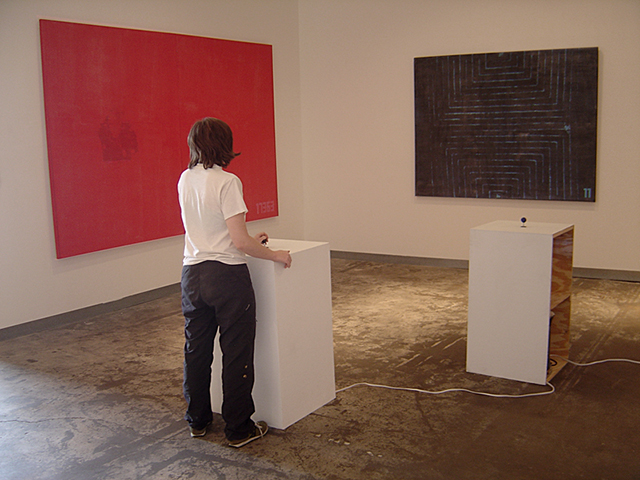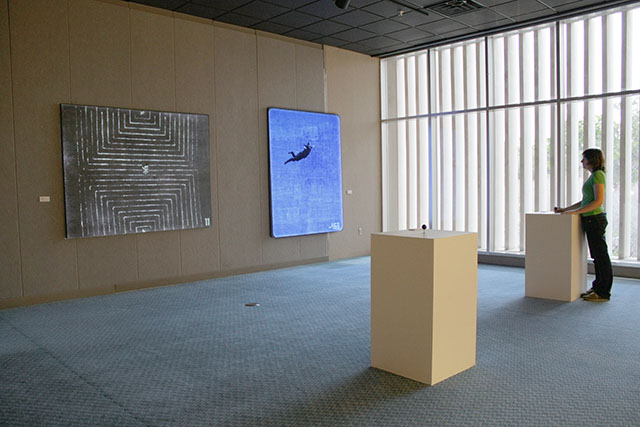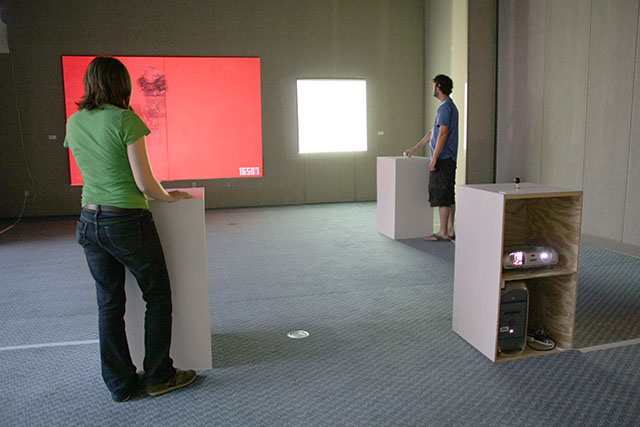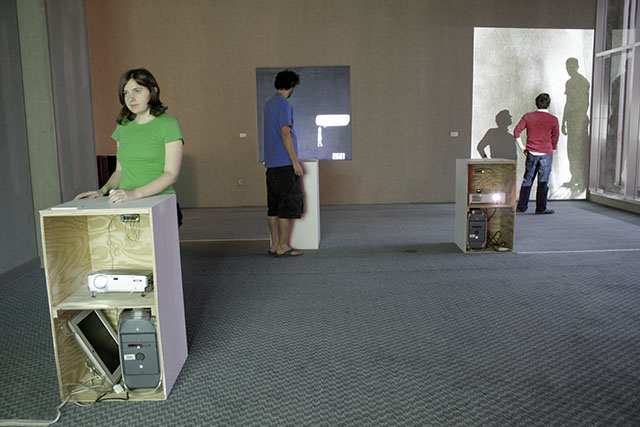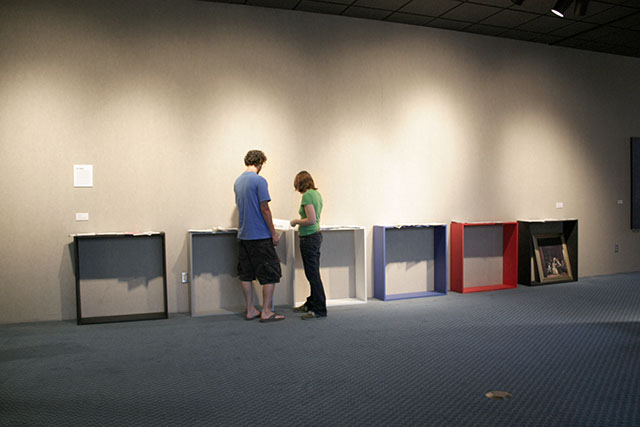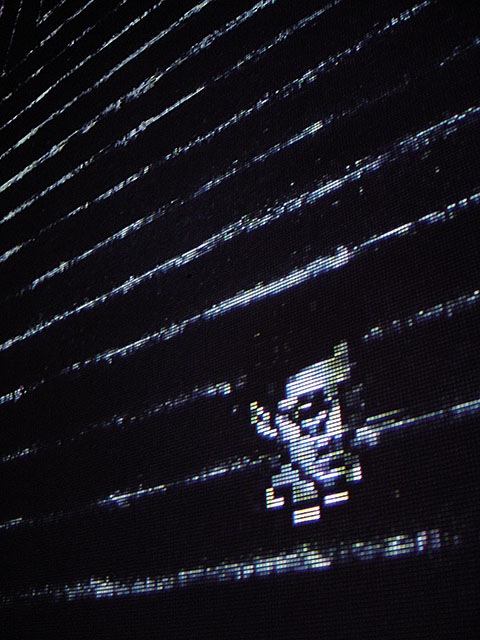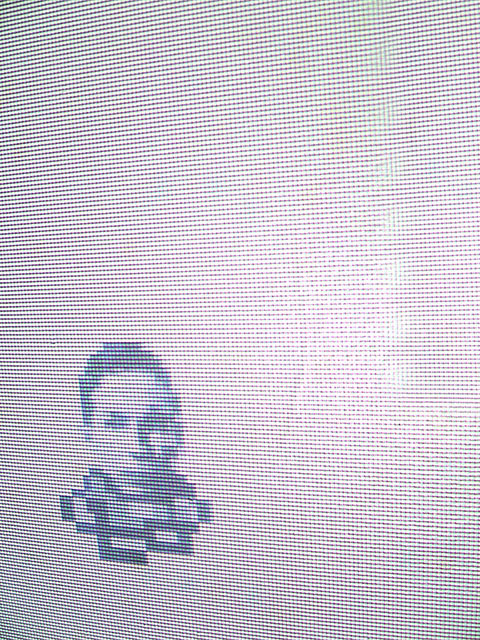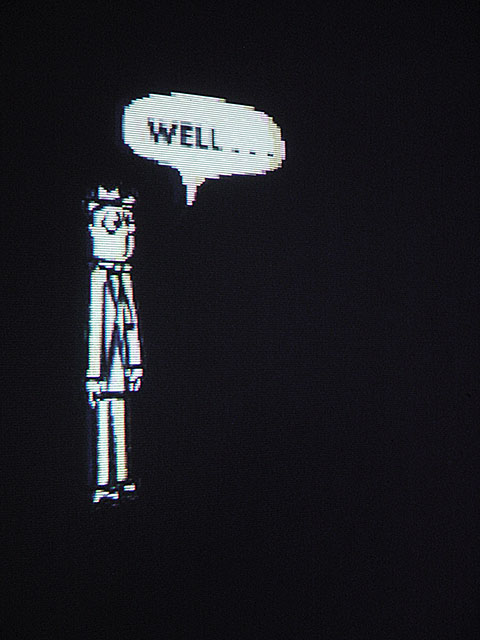
Project Description
In 2008 and 2009, I developed a series of videogames based on the monochromatic paintings of Ad Reinhardt, Robert Rauschenberg, Frank Stella, Yves Klein, and Andy Warhol. The games are designed to be projected and played on top of original paintings by these five artists. I titled these interventions "art games," referring to a current trend in which videogame designers attempt to promote their games as "art" by shifting their focus from traditional gameplay to the presentation of novel mechanics, stylistic graphics, and social commentary.
An extremely loaded term, I would argue that "art games" are consistently misinterpreted in the entertainment industry—confusion arising from the mis-conflation of the term art with concepts of beauty, truth, and social value (a logic which, for example, mirrors the discussions of the artistic value of underground comics in the 1960s). Engaging in this problematic, my five videogames turn toward the history and institutions surrounding art to explore aesthetic traditions which resonate with the kinds of gameplay currently valorized in the "art games" movement: contemplation, critique, irony, and humor.
Modeled after Ad Reinhardt's juxtaposition of stark, black monochromes and wry, pedagogical comics, my art games stage imaginary confrontations between each artist and his monochromatic work. By limiting or removing critical elements of classic gameplay (e.g. top-down mazes that repeat endlessly, side-scrolling shooters without enemies) and by adding the avatars and actions of monochrome painters, the endgame conditions of both gaming and artmaking emerge as infinite loops.
These endgames function not only as a satire of game mechanics, exposing the underlying logic of automatous repetition via non-telic play, but are also simultaneously a celebration of that minimal gameplay—an embrace of the sensory and embodied pleasure to be had in non-productive labor. And it is in this respect that the culture of video games, so doggedly focused around achievements, quests, and scores (both technically and ludologically), can sincerely borrow from art by creating a space which accepts moments of contemplative uselessness ultimately more useful than the teological fictions that dominate mainstream gaming.
Follow the links below to play these paintings.
Play the Games
Exhibition Schedule
- Game Play, Juror: Echotrope, H. Don and Connie J. Osborne Family Gallery, Criss Library, Omaha NB (April 19 - May 21, 2010)
- Fresh Blood, Mason Murer Fine Arts, Atlanta GA (August 14 - September 11, 2009)
- FloCAS '09, Juror: Libby Lumpkin, Museum of Fine Arts, Tallahassee FL (July 6 - September 20, 2009)
- Art Games (solo), The Gallery at the Reitz Union, Gainesville FL (February 16 - March 7, 2009)
Technical Description
Each game consists of two parts: a monochromatic screen, a minimal arcade console. All equipment is provided by the artist with simple, remote-controlled operating procedures. The thin, white pedestal (approximately 1.5' x 1.5' footprint) is installed between 10 and 15 feet away from the hanging monochrome (treated with reflective glass beads) and works best when not lit directly by gallery lighting. All components are stored within the pedestal from which the joystick extends in the fashion of a classic arcade machine. Controlled via joystick, a small computer running the program outputs fullscreen imagery to a digital projector. The computer and projector require only an AC power source to run the artwork autonomously.
At Mason Murer
in Atlanta, GA on August 14 to September 11, 2009
At the J. Wayne Reitz Union
in Gainesville, FL on February 16 to March 7, 2009

